Bonjour Tristesse - the story of Jean Seberg's destruction by COINTELPRO.
Paul O'Hanlon | 19.03.2005 00:41 | Analysis | Anti-racism | Repression | London
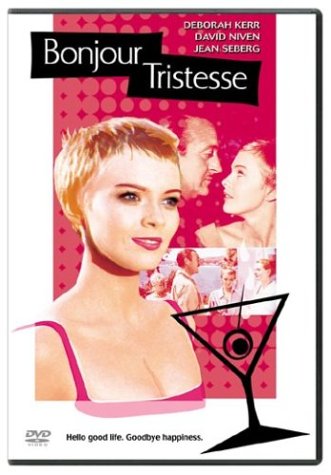
Jean in `Bonjour Tristesse` with David Niven and Deborah Kerr. Made in 1958.

Jean in `Lilith` made in 1964. Directed by Robert Rossen.

Jean looking her natural exuberant self in the 1960's.
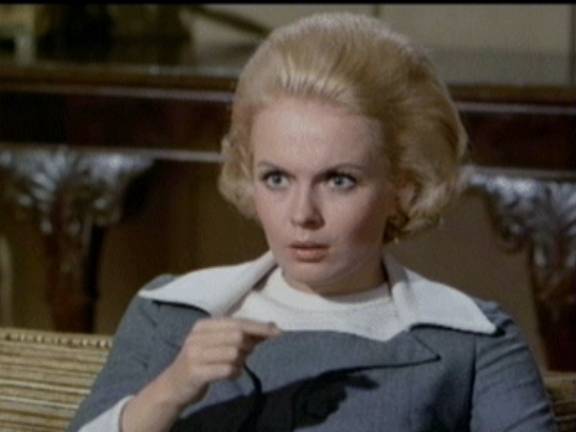
Jean in 1969 as Tanya Livingston in the 1970 released `Airport.`
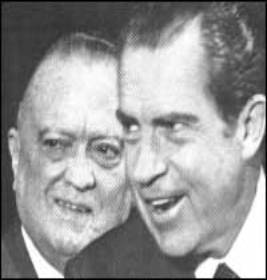
FBI Director J Edgar Hoover (left) with President Richard Nixon.
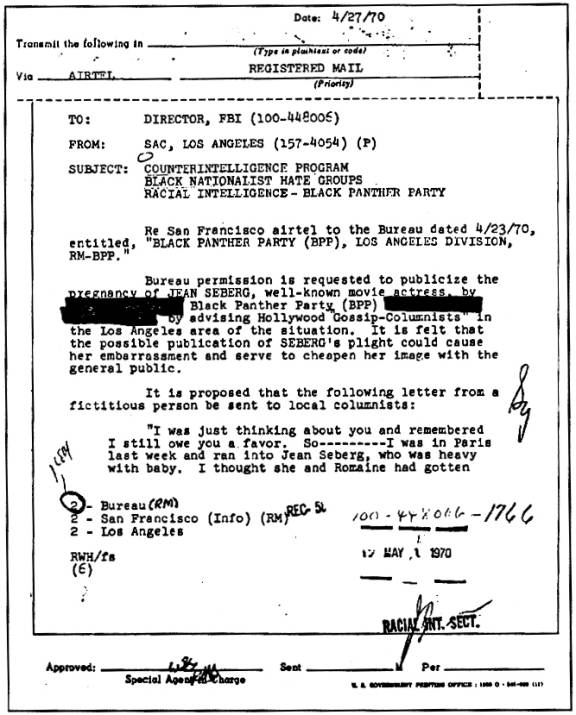
Airtel initiating the COINTELPRO againt Jean Seberg.
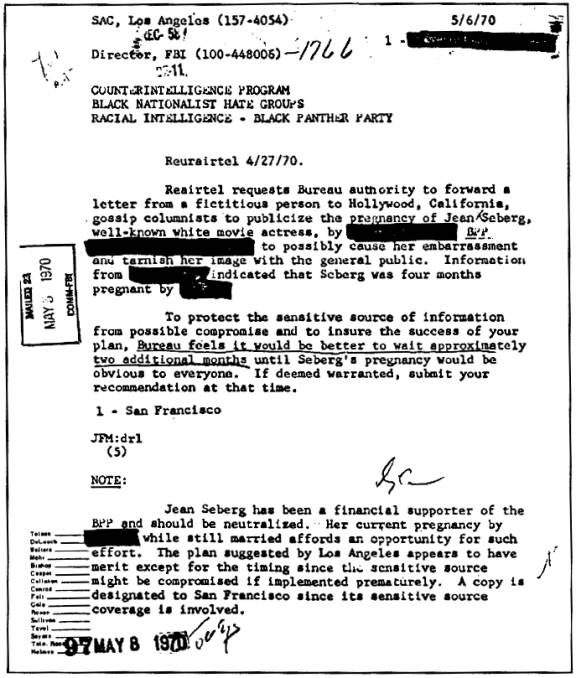
Approval of the Seberg COINTELPRO.

Jean in 1977. Compare this with below to see how she aged in her last years.
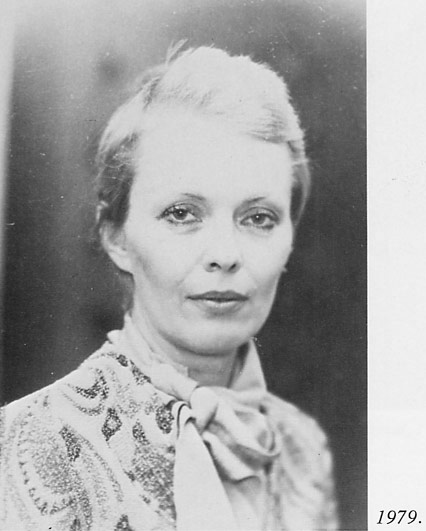
Jean sad at 40 in 1979, the year of her death.

Jean's grave at Montparnasse Cemetery in Paris. It's well tended by fans.
(FEATURE ARTICLE ON JEAN SEBERG)
Bonjour Tristesse, literally Hello Sadness or perhaps more fluently, Goodbye Happiness is the title of a 1958 film starring Jean Seberg and sadness is something that Jean was to know much of in her brief and tragic life.
Montparnasse Cemetery, south of the River Seine in the fashionable Parisian district of the same name, has many famous people interred there. French army captain Alfred Dreyfus, crooner Serge Gainsbourg, writers Simone de Beauvoir and Samuel Beckett and philosopher Jean-Paul Sartre all lie at rest here. Grave number 6, sector 13, near the junction of Avenue Principale and Avenue du Nord is the last resting-place of 1960’s film idol Jean Seberg. Her short, sad life came to an end in 1979 when she committed suicide at 40 after years of mental anguish.
Plucked from small town obscurity at the age of seventeen she was to become a cinematic icon on both sides of the Atlantic. Generous, tolerant and sanguine by nature, her espousal of left wing groups like the Black Panthers caused her to fall foul of the WASP dominated American establishment. Ultimately her demise after a vicious smear campaign by the FBI’s COINTELPRO was to rob the world of an exceptional performer and great humanitarian. She left the World with a legacy of some 34 feature films including the Oscar nominated Airport, the Western Paint your wagon, comedies such as A Fine Madness and The Mouse that roared as well as such classics as A Bout de Souffle (Breathless) and Lilith. Suffering from bouts of depression throughout her days she was to die by her own hand in her adopted home city of Paris.
Who was Jean Seberg? She was born Jean Dorothy Seberg in Marshalltown, in the Iowa Corn Belt some 300 miles West of Chicago, on 13th November 1938. She attended schools in Marshalltown and the University of Iowa in Iowa City. She harboured acting dreams throughout her childhood, appearing in local productions of dramas like `Our Town` and `Picnic`. While still at Iowa University director Otto Preminger chose her from around 18,000 hopefuls in a heavily publicised talent contest for the lead role as Joan of Arc in the 1956 film St Joan. British writer Graham Greene (author of `Heart of the Matter`, `The Third Man` etc.) wrote the screenplay adapted from Bernard Shaw’s `Saint Joan`.
The film was shot in England and while a commercial failure it contains one of the most realistic and disturbing death scenes in cinema history. This is the finale in which Joan is burned at the stake as a witch, when Jean Seberg actually takes a fireball full in the face on camera.
Her next film, also directed by Preminger, was Bonjour Tristesse (see photo)in which she gave a marvellous performance as David Niven’s spoilt adolescent daughter, Cecile. These first two films failed to bring her any critical acclaim in the United States and Preminger offloaded her contract on to Columbia who put her into the 1958 comedy The Mouse that roared. This too failed to catch the public’s attention and her career might have faltered or even ended here but for debut director Jean Luc Godard’s choosing her for his 1959 A Bout de Souffle. He was an admirer of Preminger and wanted a young actress for the part of Patricia Franchini in his Nouvelle Vague [New Wave] classic. By sheer coincidence, Jean was already in Paris at the time, having just married lawyer Francois Moreuil, and Columbia loaned her out for practically nothing. Her impressive performance as a pixyish American romancing a French thug [played by Jean-Paul Belmondo] was to quickly emerge as one of the seminal films of the postwar era.
The film displayed some of the radical techniques that defined the new wave: jump cuts (in the middle of a scene rather than between scenes), improvised dialogue, intentionally jerky camera movement, and philosophical discussions. The film, shot in Marseille and Paris in just five weeks in the late summer of 1959, was released in Paris the following March and made Jean an instant star in France
Suddenly she was a hot property, and Columbia quickly ordered her to return to the U.S. to appear in the anti-drug drama `Let No Man Write My Epitaph`. Here performing alongside established names like Burl Ives and Shelley Winters she played James Darren’s girlfriend Barbara. During its making she was said to be homesick for her husband François though on her return to Paris the two were soon to divorce. In 1963 she married the French writer Romaine Gary. Though a big name now in France, Hollywood simply had no idea how to use her. In Europe however, she was much sought after and by 1960 Jean was a cultural icon in France, influencing the Parisian fashions every bit as much as Godard and Truffaut were influencing film. Jean never really liked the bitchiness of Tinsel town once famously saying: “...I never knew until I came here that somebody could be really nice to you for years and really hate your guts. Happens all the time here...” It’s almost like she was foretelling her smearing in 1970 by a Los Angeles gossip columnist.
Spending the early sixties in France she appeared in La Recreation [Playtime], L’Amant de cinq jours [The Five Day Lover], Congo Vivo and Eschappement Libre [Backfire].
She returned to America in 1964 to close out her Columbia contract with the excellent and much underrated Lilith where director Robert Rossen cast her to perfection in what was surely the finest of her American films. Lilith is a biblical character who, according to Hebrew legend, was the first woman God created as a companion for the first man Adam. The tagline of the film was: `Before Eve there was Evil... and her name was Lilith! ` Jean once again played a mythological character as in Joan of Arc.
Lilith Arthur is a beautiful young schizophrenic in a luxurious New England mental asylum who seduces her occupational therapist Vincent, played by Warren Beatty. There are fine supporting performances from Peter Fonda as the neurotic Stephen Evshevsky who is infatuated with Lilith, Kim Hunter as Dr Bea Brice and a young pre-French Connection Gene Hackman in his first film as Norman.
Jean’s gamine hairstyle was covered with a long blond wig and in one endearing scene she wades into a mist shrouded lake, draws the skirt of her cotton dress to her knees, and bends over to kiss her own reflection. This illumination of her character’s destructive self-absorption and of Jean’s own feminine poise is for me one of the defining moments
of the movie. Much of the movie's impact comes from the quieter moments which depend solely on her facial expressions - the slightly cruel smile as she watches a man almost drown trying to prove his devotion to her, the captivated sense of wonder with which she responds to a puppet show. Her sheer physical presence electrifies the film. Her near perfect, lucid features, the aura of her long blond hair, the simple dresses that she wears and her unadorned Midwestern twang suggest an image of the girl next door, but there is always darkness just beneath the sunlight. In the scene when Beatty's Vincent first rejects Lilith’s advances, she strikes out at him with the fury of a child that is at once poignant and petrifying. The climax of the movie, when Lilith finally seduces Vincent, takes place during a small-town carnival. There’s also a hint of perversion and evil in the startling moment when she lets a little boy run his fingers across her lips and then kisses him and whispers to him an obscene secret that we cannot hear.
At the end of Lilith her character descends into complete madness, which sadly Jean herself came close to doing at the end of her life. It was later suggested that the unstable, emotionally fragile character she played so effectively in Lilith might have reflected more of the off-screen Seberg than audiences could ever have suspected.
For all its excellent portrayal of emotional instability, which brought Jean a Golden Globe nomination in 1965, Lilith did not do well at the box office though it has since achieved a certain cult status.
Jean was somewhat stereotyped after Lilith as the sophisticated, occasionally disturbed cheating wife. She continued moving back and forth from American films to French making Moment to moment, Un Millard dans un Billard (Diamonds are Brittle) and La Ligne de Demarcation (Line of Demarcation). In 1966 she played the part of spoilt wife Lydia West in the comedy A Fine Madness where Sean Connery was attempting to make a clean break from his James Bond image. La Route de Corinthe (The route to Corinth) in 1967 was followed by Les Oiseaux vont mourir au Peru (Birds Come to Die in Peru) and Pendulum with George Peppard in 1969. The end of the 60’s saw Jean make two of her best-known films, Paint your wagon and Airport. Still not that well known to American audiences her chance came when Alan Jay Lerner asked her to play the female lead in the musical comedy Western Paint your Wagon in 1969. Playing a woman of quiet strength she was Elizabeth, the love interest of both Clint Eastwood and Lee Marvin in a ménage a trois.
Although some sources say every actor in Paint Your Wagon is heard singing on the soundtrack, Jean Seberg's voice was actually dubbed by Anita Gordon, who is uncredited in the film. While the shoot of the film was said to be troubled primarily because of Eastwood’s and Marvin’s bickering, the Oregon settings are gorgeous and there are 13 memorable songs like “They call the wind Maria”, “I talk to the trees” and “Hand me down that can O’ beans.” The initial release fell far short of regaining the millions put into the production, and most critics dipped their pens in poison to berate the picture - though the film plays better than the critics would lead anyone to believe. Her next film, Airport, was based on the eponymous bestseller by Arthur Hailey. Here playing opposite Burt Lancaster as Tanya Livingston she was once again cast as a flirtatious female. The story is centred on snow bound Lincoln International Airport (actually Minneapolis St Paul airport). The action is split between airport manager Burt Lancaster juggling his lover (Jean) with his wife (played by Dana Wynter) on the ground while the 707 in the air piloted by airhostess nuzzling Captain Vern Demarest (Dean Martin) has a bomb-toting maniac (Van Heflin) on board. Derided by many critics as an empty headed soap Airport is nevertheless an entertaining film which was nominated for 10 Academy Awards picking up one for Helen Hayes as best supporting actress.
Our examination of Jean’s film career takes us up to 1970, which is the year that was to prove decisively disastrous for her.
Her Hollywood performances, although never considered by Jean herself to be of any consequence, were frequently stunning, and she was often compared to silent movie queen Louise Brooks for the intelligence that she brought to her roles. She was typically modest about her acting saying:"the less I know about acting and the more I know about everything else, the better I'll be at both acting and living..."
Jean, like her contemporaries Jane Fonda and Vanessa Redgrave, was politically active in the late 60’s and was particularly supportive of the NAACP (National Association for the Advancement of Coloured People). She spoke out after the assassination of Dr Martin Luther King in 1968 and was friendly with the Black Panthers to whom she is reputed to have donated $100,000 [around $1 million in today’s money]. While Jane Fonda was dubbed `Hanoi Jane` and Redgrave’s career suffered because of her support for the Palestinians it was Seberg who was to pay the heaviest price when she fell foul of FBI director J. Edgar Hoover. Hoover, `the boss` from 1924 till his death in 1972, saw Jean as a particular threat because of her popularity on both sides of the Atlantic. These were the days of an FBI campaign, sometimes forgotten today, called COINTELPRO meaning Counter Intelligence Programme. Briefly COINTELPRO was a series of programmes of political harassment directed against black and socialist organisations such as the Black Panthers, the Civil Rights movement, the Socialist Workers Party and the burgeoning 1960’s peace movement. Not lawful investigation, but actual criminal acts committed by the FBI designed to deny the black population (along with Native Americans, the anti-war movement, and the early feminist movement) their civil rights. It involved widespread and illegal wiretapping, the use of smear campaigns, infiltration and outright violence against those groups deemed to be a `threat` to the American Apple Pie way of life. The White Anglo Saxon Protestant US ruling class including Hoover had a particular dislike for the Black struggle especially militant or uncompromising organisations like the Panthers. According to a former Los Angeles based FBI agent (M. Wesley Swearingen) a culture of racism had permeated the bureau and their venom was particularly directed towards the Panthers and the white women who associated with them. Hoover was reputed to have said he was going to 'take care of those two bitches' - meaning Jean and Jane Fonda. But Hoover said it was Seberg who kept him awake at nights. When a high profile blonde actress like Jean devoted much of her money and time to them Hoover singled her out for exceptionally harsh treatment. On April 27th 1970, just seven weeks after the New York release of Airport, SAC [Special Agent in Charge] in Los Angeles Richard Held sent a memorandum to headquarters requesting permission to smear Jean: It reads: “Bureau permission is requested to publicize the pregnancy of JEAN SEBERG, well known movie actress, by [DELETED] Black Panther Party (BPP) [DELETED] by advising Hollywood `Gossip-Columnists` in the Los Angeles area of the situation. It is felt that the possible publication of Seberg’s plight could cause her embarrassment and serve to cheapen her image with the general public”
Richard Held is purported to have said: “ I wonder how she’d like to gobble my dick while I shove my .38 up that black bastard’s ass.” This was a reference to Panther theorist Raymond `Masia` Hewit with whom Jean was supposedly having an affair.
Hoover said that Seberg deserved to be `neutralised` because of her financial support for the Panthers. He gave his authorization with the proviso that the implementation be postponed for approximately two months until the pregnancy became more visible and also to protect the secrecy of wiretaps the Bureau had installed in the Los Angeles and San Francisco BPP headquarters. The schedule was accelerated however and on June 6th Held sent Hoover a letter with a newspaper cutting demonstrating the success of the operation. The cutting showed an article by Los Angeles Times gossip columnist Joyce Haber laying out the Bureau fiction of Jean [here referred to as `Miss A`] being pregnant by a prominent Black Panther. The article was syndicated to over a hundred newspapers including the International Press and `Newsweek`.
Held and Hoover knew Jean to be emotionally unstable before the smear and the effect on her was to attempt suicide with an overdose of sleeping pills. Though she survived, the trauma of the event caused her to go into premature labour and the resulting baby girl Nina died just two days later on August 25th 1970. Jean was devastated and never fully recovered, for every one of her remaining 9 years she tried to kill herself on the anniversary of the miscarriage.
She called a press conference at which she presented shocked journalists with the foetus of her dead white child and at the funeral she insisted on a glass coffin. In her 1993 book `Make Believe` Diana Athill recounts how “after the baby died Jean became obsessed with it. She had photographs taken of it in its coffin and tapes made of the funeral, and these she brooded over, and made other people brood over, for hours on end.”
Though plagued by personal problems Jean was to make 12 more films in what remained of her career though none of them was of any great note. She made Ondata di calore (dead of Summer), a psychodrama made in Morocco. She played Joyce Grasse, an American woman who cannot cope with the pressure of her isolated existence. She seldom sees her husband, cannot speak the language, and finds that racial tensions interfere with her ability to get along with the locals. In 1971 Jean made Kill! with James Mason and Stephen Boyd, then in 1972 Questa specie d’amore (This kind of love) and Camorra! followed by the French Conspiracy with Roy Scheider in 1973. On May 1, 1973, tragedy struck again when her close friend Hakim Jamal, a black activist, was brutally murdered. In 1974 she made an American TV movie Mousey with Kirk Douglas and in the same year had her one and only try at directing in Ballad for the Kid. She spent the last five years of her life in Europe making films not released to the foreign market. Her last film was Die Wildente (The Wild Duck) a German-language version of the Henrik Ibsen play in 1976.
Jean attempted suicide by throwing herself under a Paris metro train but miraculously survived and even had thoughts of a comeback. She was apparently enthusiastic about a possible but then unconfirmed role that would have reunited her with her "Bonjour Tristesse" co-star David Niven. The film, "A Nightingale Sang in Berkeley Square", was eventually remade in 1980 with German actress Elke Sommer taking the role Jean was meant to play.
JEAN'S DEATH
Jean went missing in August 1979 and to the consternation of her fans could not be found. Their worst fears were confirmed when on the evening of Saturday 8th September 1979 her Renault car was discovered by an off-duty policeman in the Rue du General Appertin, in a smart residential district near the Champs-Élysées. The policeman noticed the car by the kerb, covered with leaves and dust. On opening the door he saw a big bundle on the floor at the back, wrapped in a blanket. It was the body of a blonde woman. Near the body were several empty pill bottles and a half empty bottle of mineral water. From the badly decomposed state of the corpse it was believed that her death probably occurred shortly after her disappearance. Jean had left a note addressed to her son, and only child, Alexandre Diego. She complained about depression and wrote: “ I can’t live any longer with my nerves.”
The day after her funeral the London Daily Telegraph reported that the FBI admitted it spread the rumour that destroyed Jean. This revelation consisted of two and three quarter inches on page 19. The London Times of November 20th that year printed a somewhat longer piece, all of nine and three quarter inches on page 9, which was headlined `FBI agents blamed for Jean Seberg suicide` and which mentioned the word COINTELPRO.
After her death came the documentary Jean Seberg: American Actress (1995), and the docudrama From the Journals of Jean Seberg (1995), with Mary Beth Hurt, ironically also from Marshalltown, as Jean.
Jean had outlived both J Edgar Hoover by seven years and COINTELPRO by eight.
Speaking in 1975 Congressman Don Edwards had said: “Regardless of the unattractiveness or noisy militancy of some private citizens or organisations, the Constitution does not permit federal interference with their activities except through the criminal justice system, armed with its ancient safeguards. THERE ARE NO EXCEPTIONS. [Emphasis added] No federal agency, the CIA, the IRS, or the FBI, can be at the same time policeman, prosecutor, judge and jury. That is what constitutionally guaranteed due process is all about.”
It is to be hoped that these sentiments still apply today though the Patriot Act and recent FBI surveillance on the anti-war movement in the United States are warnings that the ghost of COINTELPRO may still linger on. However George Clooney, Susan Sarandon, Mike Farrell, Dustin Hoffman, Michael Moore, Tyne Daly, Sean Penn and Martin Sheen were among many celebrities who spoke out against the 2003 attack on Iraq and to date none have suffered seriously for it. I wonder what would Jean have made of it?
I have visited Jean’s grave in Montparnasse and found it well tended and with fresh flowers. On a grey, chilly November afternoon I reflected with sad and sombre thoughts on the tragic end of someone I had grown to admire. I left a little note of appreciation on her tomb saying simply, “To a fine actress and great humanitarian, so tragically cut down, from a devoted fan always.”
Though departed for more than two decades now, for me she will always be the breezy young American girl hawking the New York Herald Tribune on the Champs Élysées in A Bout de Souffle or the flute-playing sylph with the long golden tresses in Lilith.
VIVA JEAN!
10 labelled photos and COINTELPRO documents attached.
BIBLOGRAPHY:
`The COINTELPRO papers` by Ward Churchill and Jim Vander Wall
`International Directory of films and filmmakers`
`The new biographical dictionary of film`
`Dictionary of World Biography`
`COINTELPRO: The FBI’s Secret War on Political Freedom` by Nelson Blackstock
`Quinlans film stars`
`Make believe` by Diana Athill
`The Great Movie Stars – the International Years`
`Times` newspaper archive
`Daily Telegraph` newspaper archive
`Guardian` newspaper archive
Word Count 3,818 words
Paul O'Hanlon
 e-mail:
o_hanlon@hotmail.com
e-mail:
o_hanlon@hotmail.com